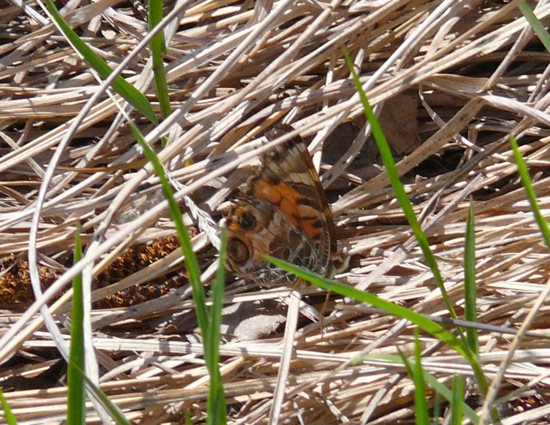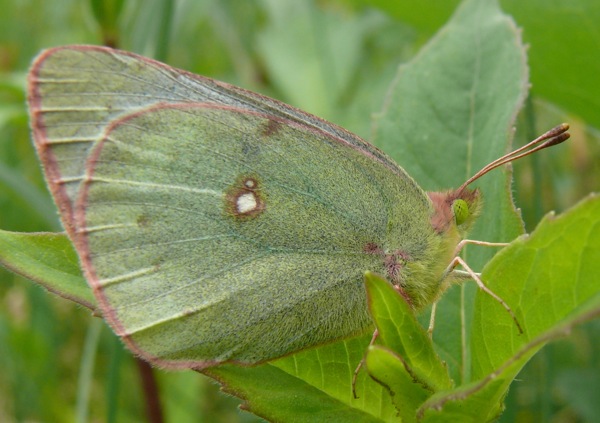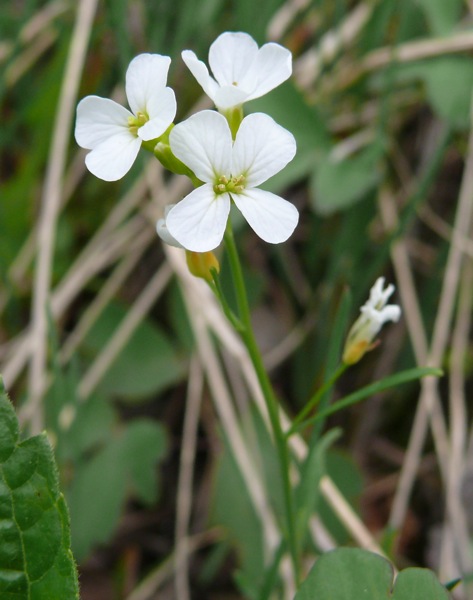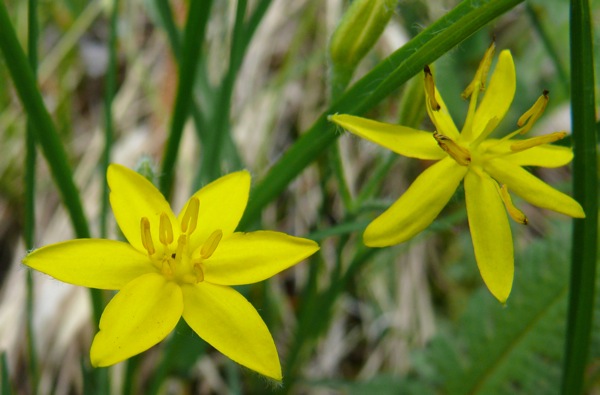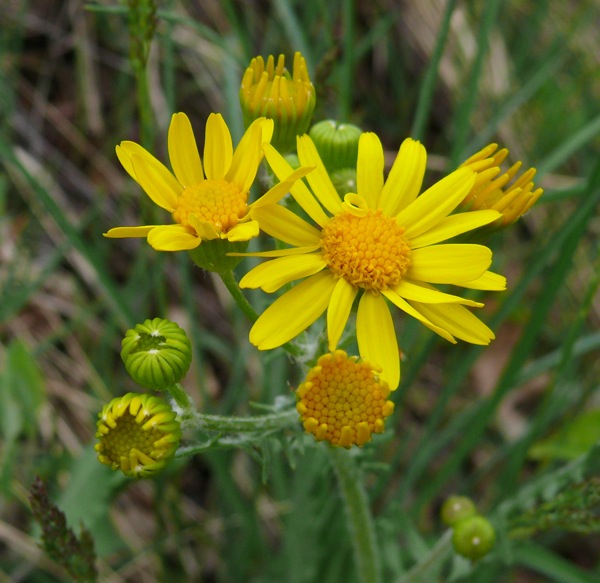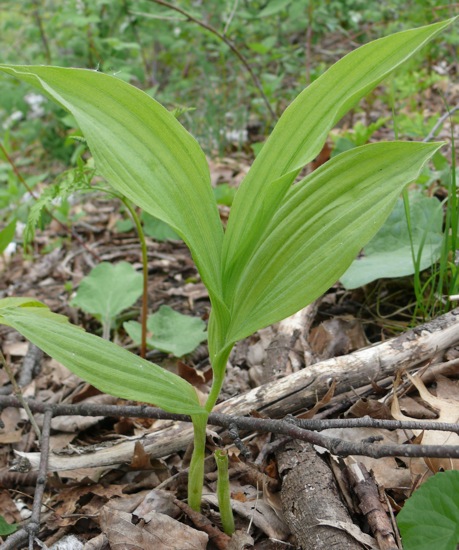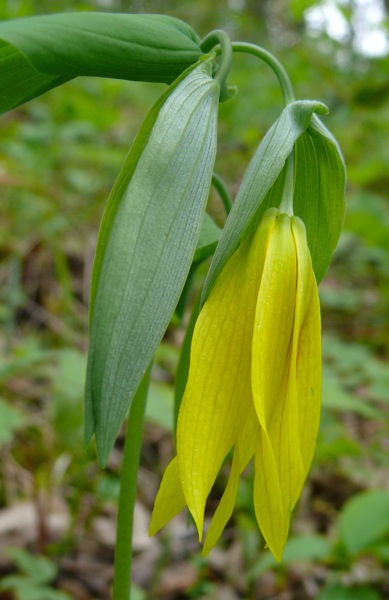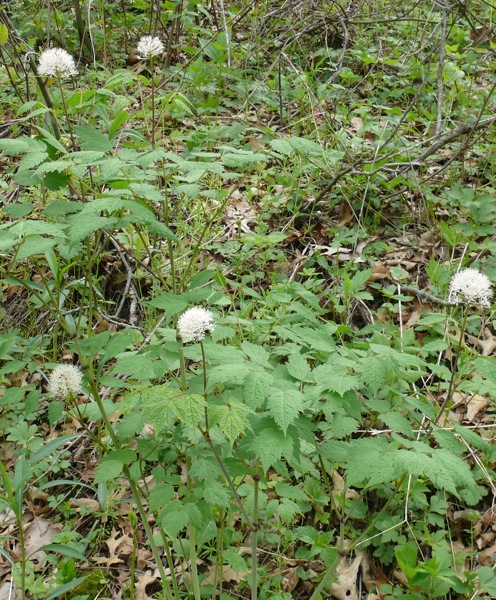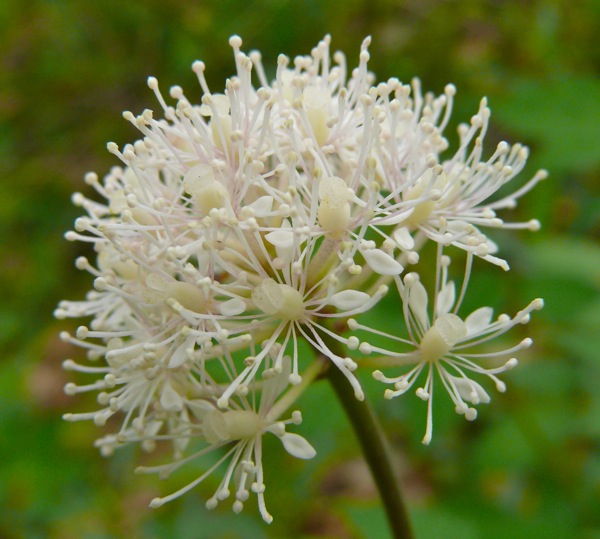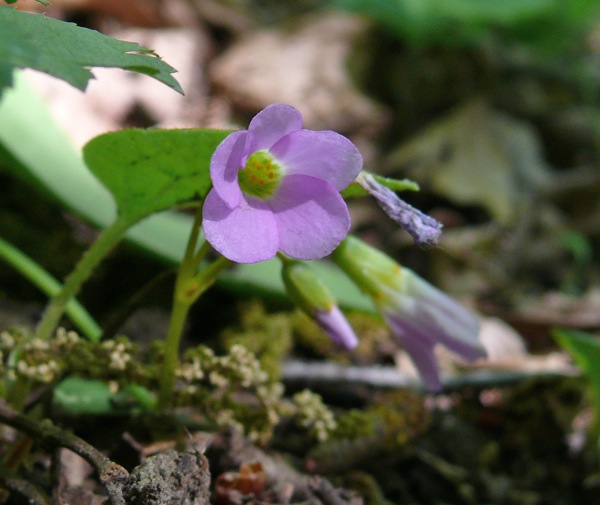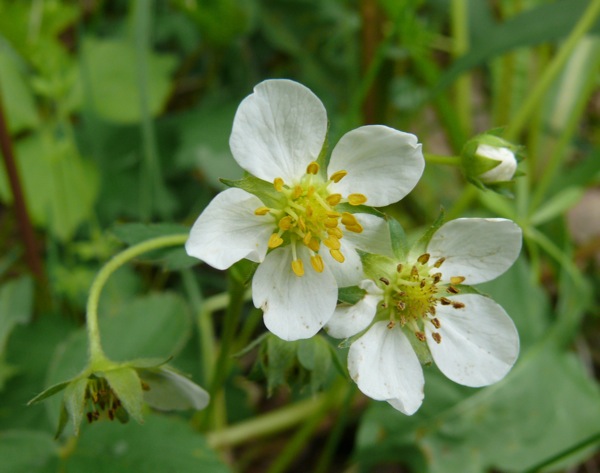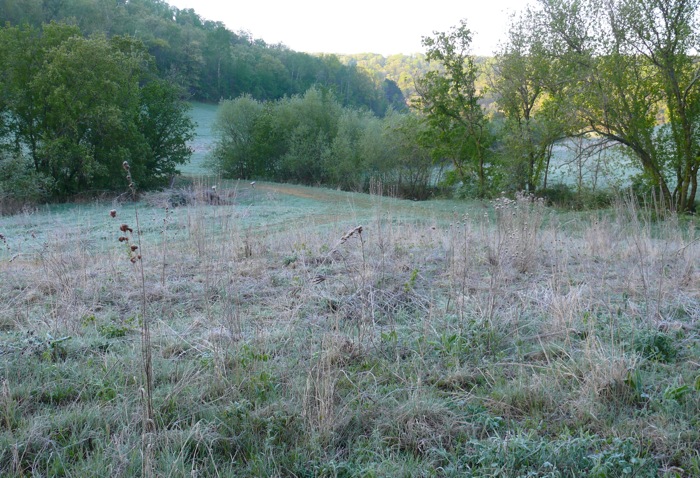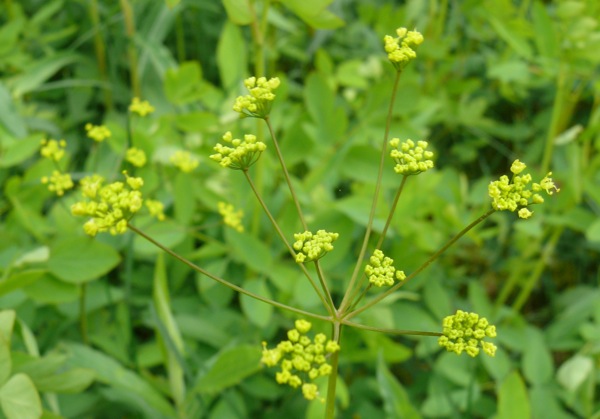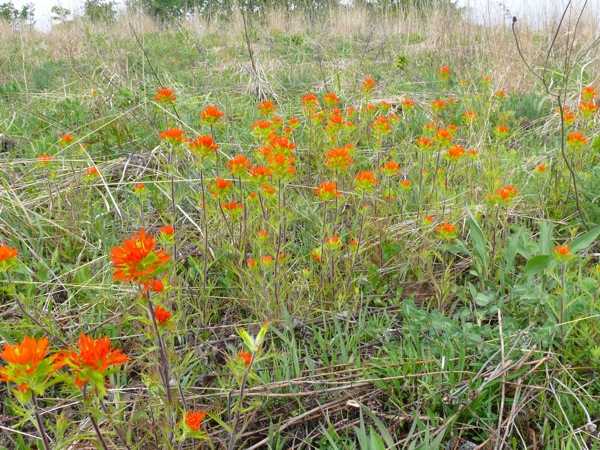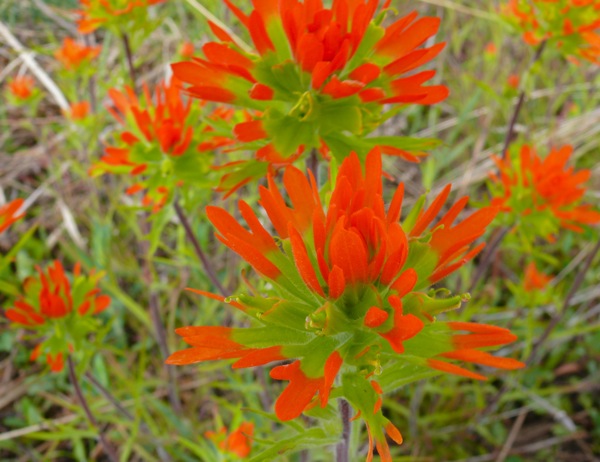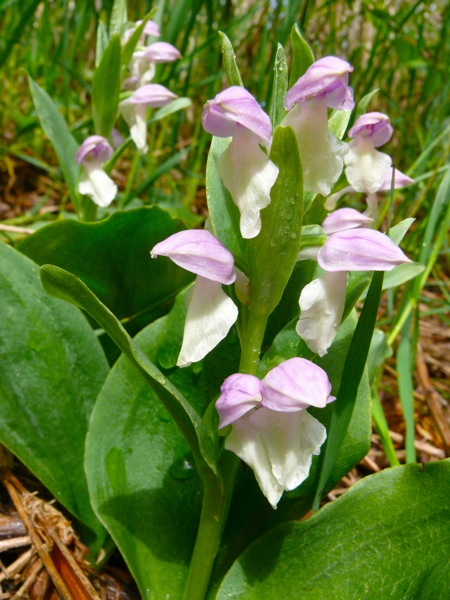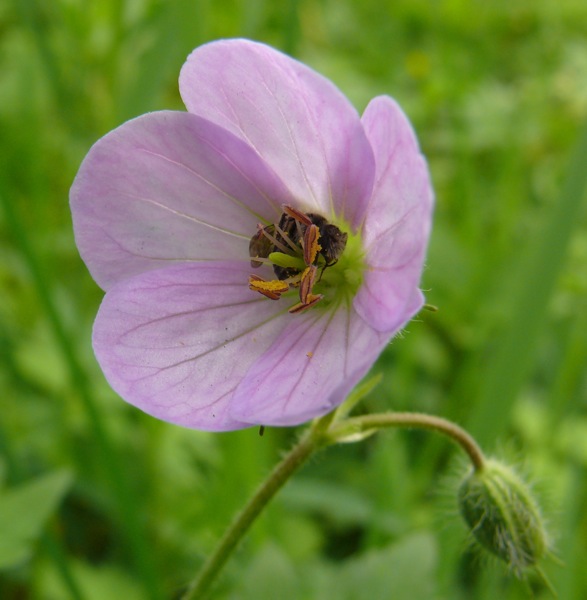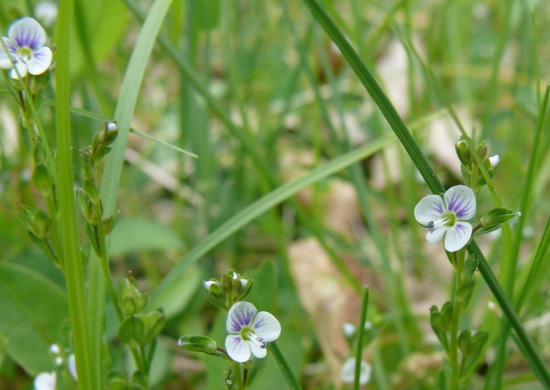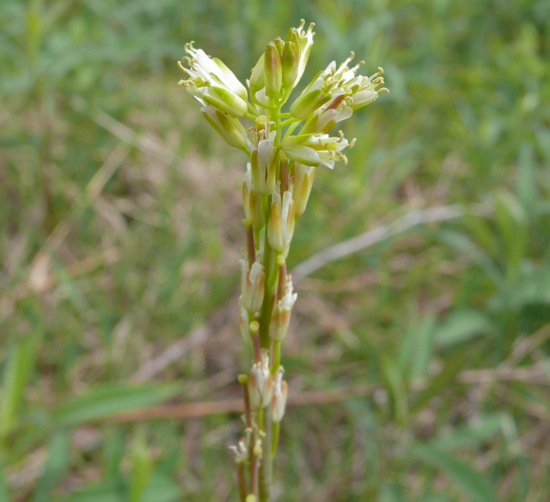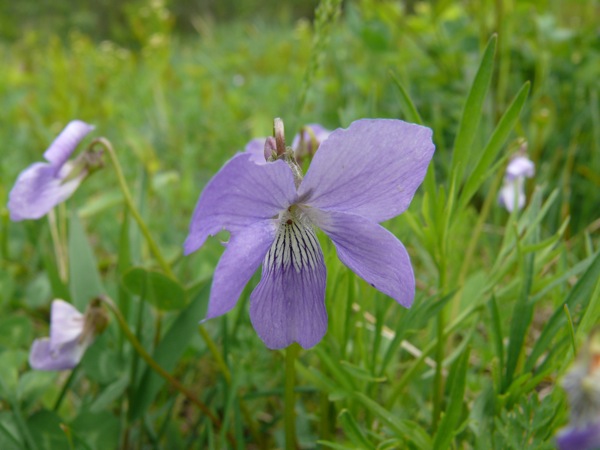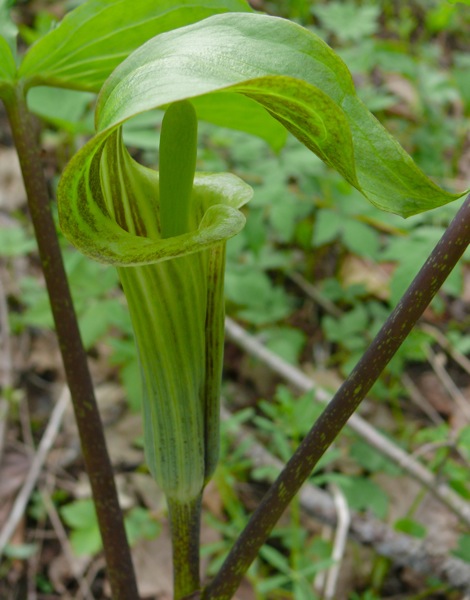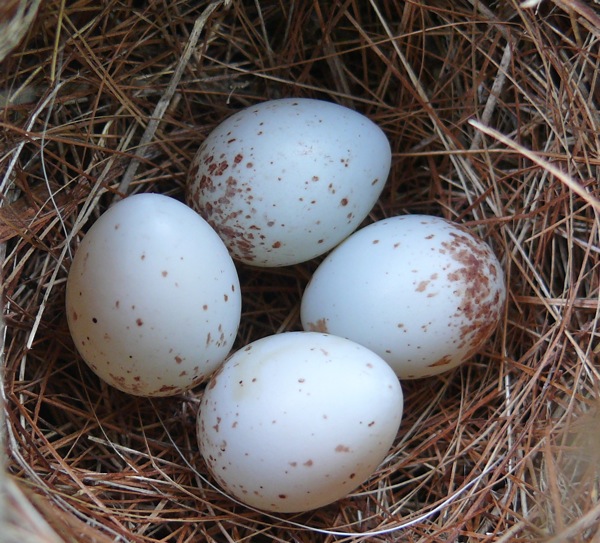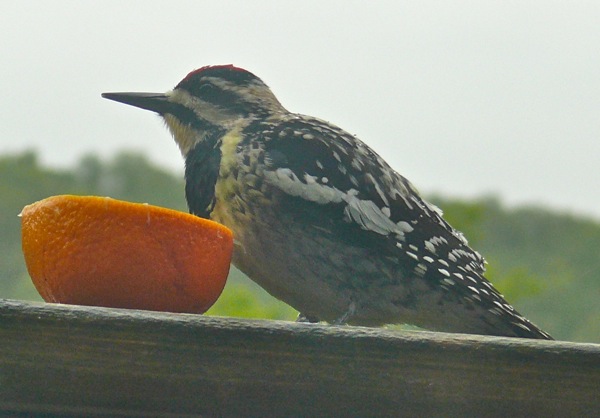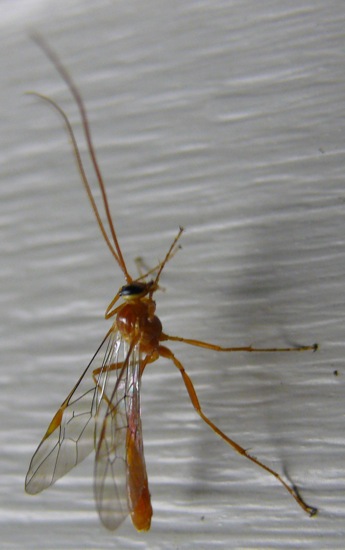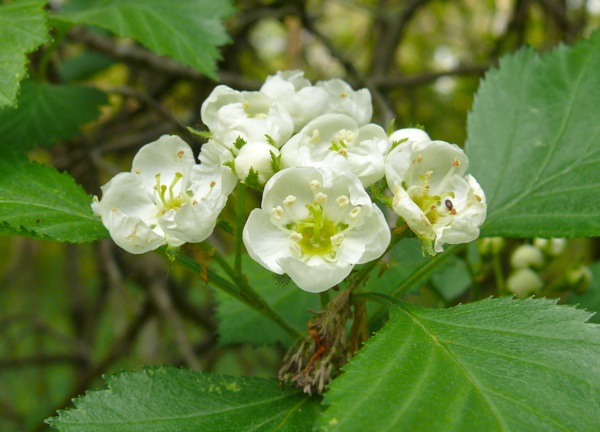May and April seem to have switched places this year. April was hot and summery, and May has been rainy and cold. We’ve had 3/4 of an inch of rain today, and nearly 2 inches this week. But it’s supposed to clear up and get warmer in the next few days.
In between the rain and cold, I’ve seen a few butterflies.
An American Lady – she was worn and tattered looking, so she probably flew up from farther south. She was laying eggs on Pussytoes (Antennaria sp.).
Clouded Sulphur – this one must be freshly hatched – I’ve never seen one with so many colors in it’s wings.
The flowers like the rain – they’re looking much happier than when it was hot and dry.
Sand Cress
Yellow Star-grass
Balsam Ragwort
My best find this week was a Yellow Lady’s Slipper – not blooming – but at least it’s here! It’s the first Lady’s Slipper I’ve found at the farm, and the 8th orchid species.
Yellow Lady’s Slipper – there are two stalks, but the leaves have been eaten on one. I covered the remaining stalk with a wire cage to protect it from the deer. Maybe it will get enough energy to flower next year.
I’ve been working on pulling Garlic Mustard for the last two weeks. It’s a bigger project every year. This year I found many new infestations – some had clearly been there for several years, but I had missed seeing them before. If I walked every inch of the woods, every year, I could catch any new plants – but we just have too much woodland. I did a separate post about the Garlic Mustard problem – part of a new section of the blog about invasive species.
Here are more of the “good” plants I’ve been seeing.
Large-flowered Bellwort
Wild Columbine
Red Baneberry – It’s called “Red” Baneberry because it usually has red berries. (But sometimes the berries are white.)
Red Baneberry flower
Violet Wood-sorrel
I’ve been trying to figure out which Wild Strawberry species we have. It’s very confusing – identifying them depends on the size of the tooth on the end of each leaflet (which varies from plant to plant), and whether the flowers are taller or shorter than the leaves (which changes depending on how old the flowers are). So I’ve given up for the moment. Maybe I’ll be able to tell which species is which from the fruits.
We had frost one morning – it got down to 28 degrees.
Yellow Pimpernel
Indian Paintbrush is blooming in our planted prairies.
Indian Paintbrush – the flowers are actually at the ends of the little green tubes. The red things that look like flowers are brightly colored leaves.
Showy Orchis – I found these growing along the weedy edge of one of our planted prairies.
Some friends took us for a walk on some nearby land that’s owned by their family. It’s an old farm, with an old house and some weedy fields, but up on the hill there’s a beautiful bluff prairie. I got them all to come up to see the prairie with me, but it was very difficult walking because it was so steep. I’ve added it to my “Neighboring Prairies” section of the blog – and called it Bird’s Eye Prairie.
This Wild Geranium has an insect hiding in its flower – I didn’t notice it until I looked at the photo, and I don’t know what kind of insect it is.
This is a new flower for the farm. I’ve seen it before, but never bothered to key it out. It’s very small – the flowers are only about 1/8 inch across. It’s called Thyme-leaved Speedwell.
Another new flower for the farm – again, one I’ve seen before but never keyed out. It’s called Tower Mustard.
Prairie Violet – these bloom slightly later than Bird’s Foot Violets, and not in such steep dry places.
Jack in the Pulpit
A Field Sparrow nest in the Knife Edge Prairie. I almost stepped on the nest and the adult bird flew up from under my feet. That’s the only way I can ever find these nests – they’re very well hidden.
The Yellow-bellied Sapsuckers like the orange halves I put out for the Orioles.
There haven’t been many warm nights, so I haven’t been putting my lights out to attract moths. One night I did, and got lots of these interesting wasps. They’re Ichneumon Wasps, in the subfamily Ophioninae. They’re parasitoids on caterpillars – they lay their eggs on caterpillars and the young wasps eat the caterpillars as they grow and hatch from the caterpillar’s cocoon.
One last flower – a Hawthorn shrub

